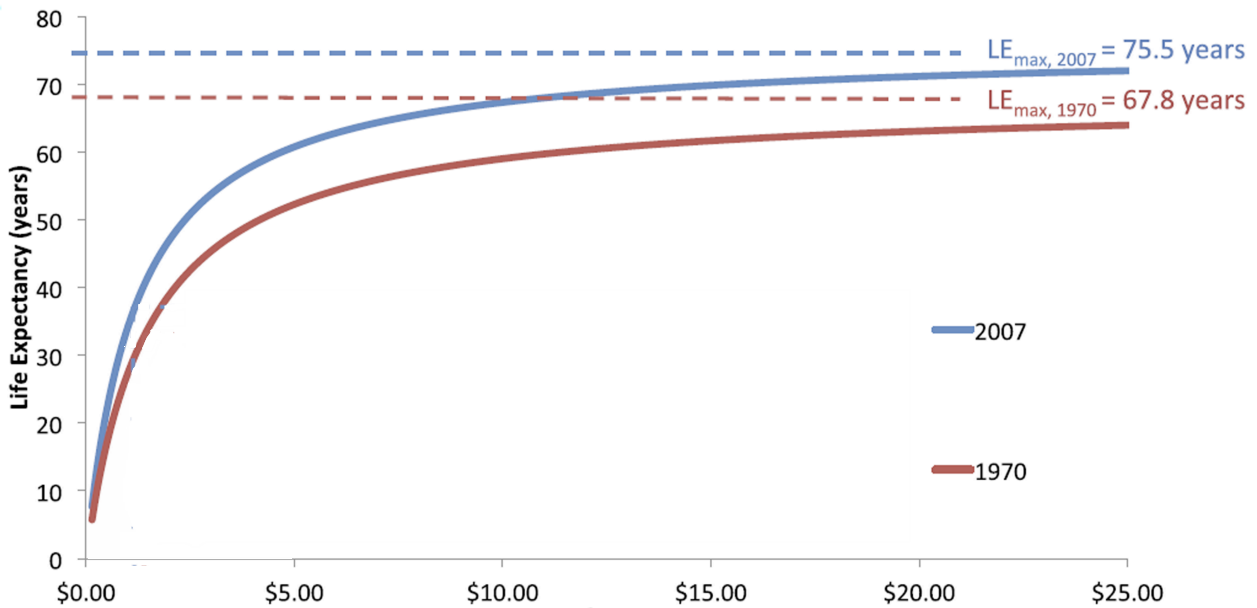We’re all living longer, but longevity increases not benefitting everybody
December 21, 2012

GDP $ per capita vs. life expectancy for 180 countries. In 2007 everyone lives longer than in 1970 because the health system is better, but in both cases, people in countries with more money live longer (graph adapted from paper) (credit: Ryan J. Hum et al./eLife)
Global lifespans have risen dramatically in the past 40 years, but the increased life expectancy is not benefitting body equally, say University of Toronto researchers. In particular, adult males from low- and middle-income countries are losing ground.
People are living longer on average than they were in 1970, and those extra years of life are being achieved at lower cost, the researchers, led by U of T Chemical Engineering PhD candidate Ryan Hum, say in a paper published in the open access science journal eLife.
However, the costs for an extra year of life among adult males in lower-income countries are rising, Hum and his colleagues say, while the costs for an extra year of life among children worldwide and for adults in high-income countries continues to drop.
“Over the past few decades, research and development of new technologies (drugs, vaccines, policies) have focused mostly on childhood and infectious disease, with fewer worldwide investments for adult chronic diseases,” the U of T researchers suggest. “Increasing coverage of inexpensive health interventions such as immunization, insecticide-treated nets, and case management of childhood infections could be contributing to decline in critical income for child survival.”
Hum and his colleagues conclude by recommending that society invest in research and treatment of adult chronic disease, most notably the control of smoking and other risk factors for chronic diseases, and low-cost, widely useful treatments for these diseases.
“Under the current conditions, an approximate national income per capita of $2.20 per day would be required in 2007 to attain the same achievable adult male survival rate with $1.25 per day in 1970. Moreover, should the critical income costs for adults continue to rise (in line with current trends),” they warn.
Hum and his colleagues noted that increases in smoking, especially among adult males, and HIV prevalence are responsible for part of the life expectancy gap. By contrast, worldwide attention to childhood health including much research on new technologies, vaccines and political attention mean a rosier future for children — it’s becoming less expensive to give children the chance for longer lives.